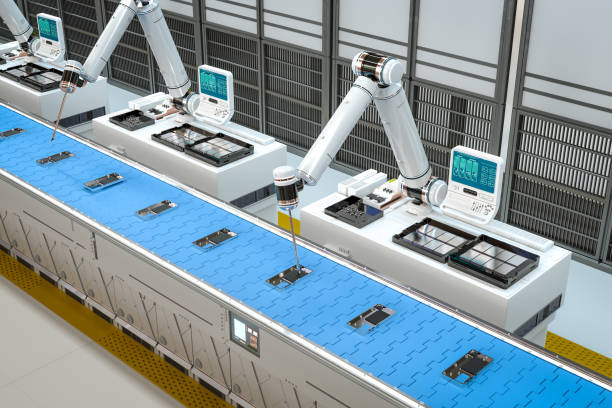Outlook for Automation and Industrial Tech

Q1. Could you start by giving us a brief overview of your professional background, particularly focusing on your expertise in the industry?
I am a highly experienced mechanical and electrical engineer with more than 17 years of expertise in the industrial automation, process analytics, instrumentation, and system integration sectors. Throughout my career, I have held multiple leadership roles — from Country Sales Manager and Head of Analytical Solutions to Business Development Manager — with leading multinational companies such as Siemens, Yokogawa, Honeywell, and SICK.
Currently, I lead Consulttech Solutions SRL, where I serve as a Business Development Consultant, system integrator, and technical advisor for complex industrial projects across Eastern and Southeastern Europe. My core expertise includes:
- Industrial automation & process control (DCS, SCADA, PLCs, Drive systems)
- Analytical systems for process and emission monitoring (CEMS, PAT, gas/liquid analyzers)
- Cybersecurity solutions for industrial networks (Private CSIRT/CERT, incident response, penetration testing)
- Cloud-based solutions for data analysis and AI (Google Cloud Platform, AI-driven industrial analytics)
- Energy infrastructure & metering (natural gas custody transfer, smart metering, EPCM projects)
- Mechanical engineering for risk & reliability in oil & gas, chemical, refining, power generation, cement, maritime and other industries
My international project portfolio encompasses successful implementations in Europe, the Middle East, Asia, and offshore installations, featuring highly specialized technical expertise in severe service control applications, safety systems, and digital transformation for industrial clients.
Q2. Which segments dominate the industrial automation market in 2025, and how do their shares vary across the oil and gas, power, and marine industries?
In 2025, the global industrial automation market continues to be driven by:
Oil & Gas (midstream, downstream, refining): ~35–40% share in total automation CAPEX, driven by process control, analyzers, advanced process control (APC), and safety systems.
Power Generation & Utilities: ~25–30% share, with strong growth in renewables integration, smart grids, condition monitoring, predictive maintenance, and AI-based optimization platforms.
Marine & Maritime Industries: ~10–15% share, with a focus on vessel automation, LNG, emission monitoring (IMO compliance), and remote operations.
While oil & Gas remain the largest absolute spenders, the fastest growth is observed in the power and marine sectors due to energy transition and environmental regulations.
Q3. How are cybersecurity solutions segmented (e.g., network security, endpoint security, cloud security) for industrial applications, and which segment is growing fastest in 2025?
Industrial cybersecurity solutions are segmented into:
- Network Security (industrial firewalls, segmentation, IDS/IPS for OT)
- Endpoint Security (ICS endpoint protection, patch management, hardening)
- Cloud Security (secure industrial clouds, remote monitoring)
- Identity & Access Management (IAM, privileged access control)
- SIEM & SOC (Security Information & Event Management for OT/ICS)
- Threat Detection & Response (AI-based anomaly detection for OT protocols)
In 2025, Threat Detection & Response and Cloud Security will be the fastest growing due to IT/OT convergence, wider adoption of AI-driven monitoring platforms, and stricter compliance with NIS2, IEC 62443, and national critical infrastructure protection regulations.
Q4. What are the primary growth drivers for the adoption of agentic AI in industrial automation, particularly for control and monitoring systems, in 2025?
Key growth drivers include:
- Predictive & Prescriptive Maintenance using AI agents
- Autonomous process optimization through AI-based control loops
- Energy optimization and smart energy systems management
- Continuous safety and compliance monitoring
- Addressing labor shortages in specialized engineering roles
- Remote and autonomous operations in offshore, unmanned, and smart manufacturing environments
Hybrid AI models, which combine physics-based simulation with ML-based data analytics, are increasingly adopted in real-world industrial operations.
Q5. How does the increasing adoption of Industry 4.0 technologies create opportunities for integrated automation solutions in East and Southeast Europe?
In Eastern and Southeastern Europe, Industry 4.0 adoption enables:
• Modernization of aging industrial assets across multiple sectors
• New investments in energy infrastructure and smart grid integration
• EU-funded digital transformation, cybersecurity, and decarbonization programs
• Growth in manufacturing relocation (nearshoring) into the region
• Development of strong regional engineering & system integration hubs
These trends create significant demand for full-scope automation solutions, including AI, cybersecurity, instrumentation, and energy systems.
Q6. What innovations in AI-driven threat detection are shaping the development of cybersecurity solutions for oil and gas control systems in 2025?
Key innovations include:
- Behavioral analytics using unsupervised machine learning models
- AI-augmented SOC platforms for faster incident response
- Digital twins for simulating industrial cyberattacks
- Supply chain integrity monitoring with AI anomaly detection
- AI-driven Zero Trust Architecture applied to industrial control systems
Oil & gas operators are investing heavily in multi-layered cyber defense integrating both OT domain expertise and adaptive AI technologies.
Q7. If you were an investor looking at companies within the space, what critical question would you pose to their senior management?
How is your company combining deep domain expertise in industrial processes with cutting-edge AI, cloud, and cybersecurity technologies to deliver full-stack automation solutions for critical infrastructure, ensuring both operational efficiency and long-term regulatory compliance?
Comments
No comments yet. Be the first to comment!
